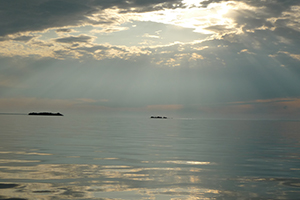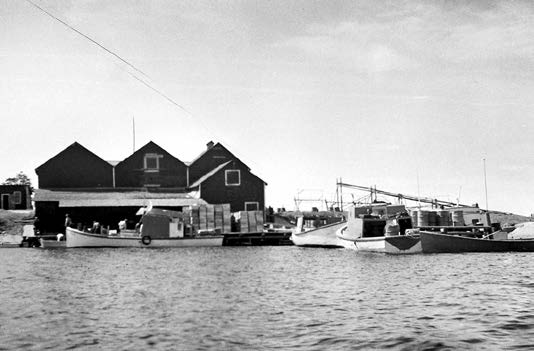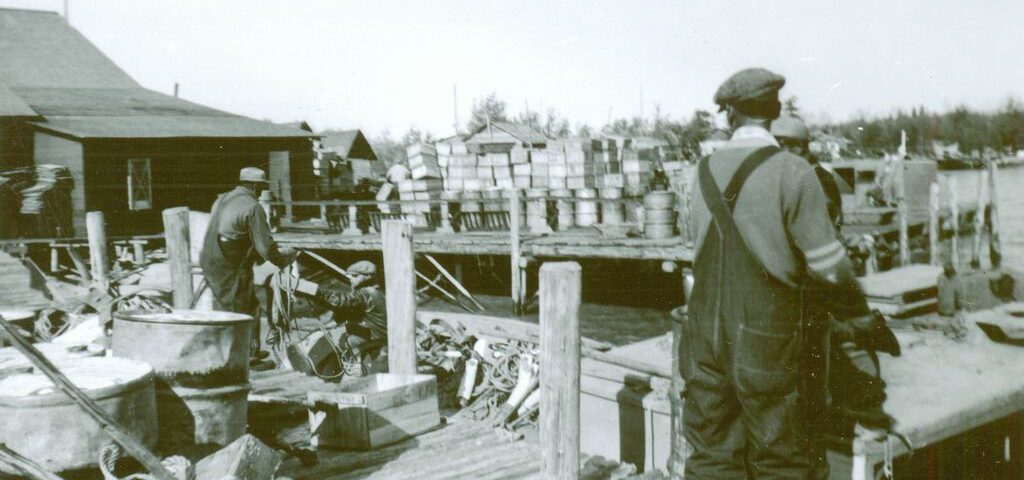
A Career in the Spaces Between
November 10, 2016
The Heartbeat of Reconciliation: “Your Dad and Auntie were such good friends”
March 19, 2018Voices in Ojibway, Icelandic and English, Side by Side in the Fishing Sheds
How can we move towards reconciliation?
What can history teach us about the future?
How can small communities offer examples of national behaviour?
Mediator, teacher, lawyer, and leader, Glenn Sigurdson’s extensive body of work includes convening and facilitating a remarkable series of Exploratory Dialogues (1999-2001) across Canada that brought together for the first time survivors of residential schools, and representatives of senior levels of the Churches and Government of Canada. In this excerpt from his book, Vikings on a Prairie Ocean, he shares his first visceral introduction to the emerging currents of social justice, still swirling 60 years later with the recent report of the Commission on Truth and Reconciliation.
Afi (grandfather) Malli was an iconic fisherman on Lake Winnipeg.Mom used to say that the lines of his face told the story of his life. Perhaps five-foot-eight, he was trim and and wiry. He was a learned man, not as the term is conventionally understand but in the purest sense of this ancient recognition. His formal schooling ended in grade two – not long, but long enough to inspire an unquenchable thirst for knowledge and a relentless passion for debate that he wrapped in deep life experience as a boy who quickly had become a man. He had a prescient nose with a sixth sense for a coming storm, whether a squall on the rugged expanse of Lake Winnipeg, stealthy threats like fertilizers seeping into the waterways making their way to the lake’s precious waters, or the treacherous currents of social justice starting to form.
Nothing raised Afi’s ire more than this “goddamn government bullshit” that Indians couldn’t go into the beer parlour. He ate, worked and slept with Indians all his life in camps and boats, but they couldn’t go for a drink together—equals on the water, but not in the beer parlour. When Afi’s fury was particularly aroused, he punctuated his forceful advocacy with a reddened face and bulging veins. Mom recalls the poignant moment when his long partner and close friend, Roy Murdock, an Indian, was about to join the gang “for a few.” Afi was aching for a chance to put his rhetorical skills to work, making it clear that “he would take care of any trouble.” Roy’s wife was not as confident, and quietly urged, “Now, Roy, you know you’re not allowed to go.” Roy listened. Afi calmed down and backed off.
Men like Roy could go to war and fight for the country (not to mention drink while on leave during the war), but couldn’t take a drink at a local Lake Winnipeg pub. Soon, at least, some Legions opened up for the veterans, and Roy could head in there to down a few. Wherever there was no Legion, though, it was some years until the Indian fishermen would enter a beer parlour without being in peril. The currents of social justice were starting to swirl in the country, and Afi’s thunder was an early “wake up call.” The marginalisation of the indigenous people throughout the hundred years since Confederation was emerging from the darkness, and I would feel throughout my life these currents that I first felt as a boy.
My deep connection to indigenous people since childhood has informed my work in many ways and many places, in difficult challenges across Canada and around the globe. Mother Earth is the indigenous soul, wherever on the globe you find yourself. There are few places in the world where resources are being hunted or exploited where there are no indigenous people whose lives and livelihoods are affected.
I came to know First Nations people as kids, just like me. I banged nails on the porch outside the cabin with Peter, and sat on the stool between the legs of his older brother Gestur who let me believe I was steering the “Spear boat” all by myself. I ate Dollie’s bannock and chipped ice in the icehouse with Tom. I knew them as Indians, just like I was Icelandic. Often, as the men sat on the dock waiting for the wind to subside so they could get out to their nets, or dressed fish together in the shed, you would hear both Ojibway and Icelandic in the room. And then they switched seamlessly to English to talk together as Canadians. It was just life, no big deal. We were kids growing up together, and their elders were no less my elders than mine theirs. It all worked. It was no big deal.
Similarly, I came to know how their communities work. Family units, like in every society, were the fundamental building blocks around which the communities were organized. Grandmothers and grandfathers were often key figures in the lives of the young children, just like they were for me. Dollie always had a gang of her youngsters on the island and around the kitchen with her. I came to understand that “who’s who in the zoo” was alive in their communities, just like every community I’ve ever known or studied. Like Riverton, some people had nicer houses than others, and better locations along the river, but the banners weren’t rich neighbourhoods and big houses. The barometer, I have come to believe, was respect, built on the strength of the family’s role and history in the community, and the inherited obligation of carrying it forward for the next generation. In my experience, this wasn’t much different from most societies, although expressed in different ways through cultural traditions and practices. Chiefs, whether hereditary or elected, play a primary leadership role, just as the leaders do in any community with whatever name they might wear. Ancestors and elders are the cornerstones of social stability. When “push comes to shove” on internal community struggles, the counsel of the elders is sought.
Meetings are often structured in a circle, such a sensible way to make everyone feel that they are there on a level playing field. There are few meetings that I do not set the room up in that way, allowing everyone to see everyone else, communicating through their words and expressions, not hidden behind tables and stacks of papers. I couldn’t count how many hotels across the country I’ve irked by pulling their tidy rectangular furniture set-ups into crude circles or diamonds, almost coming to blows with one particularly intense woman welded to a sense of order in an Edmonton hotel. I now often just pull away the tables, leaving only empty chairs to greet the participants as they enter the room. Some look askance on seeing this configuration, some confused, some enthused, but whatever the response the message is that we are doing something different in the room. The typical opening prayer in the hundreds of First Nations meetings I have participated in recognizes the glory of the creator in the plants and animals around us, and calls upon the wisdom of the ancestors to guide us. It sets a mood, and creates a climate of respect. Reflect on how you would react to this setting as opposed to a courtroom with a judge on high or a row-by-row community hall with a chair at the front, and some form of ‘call to order.” Ask yourself what effect this might have on how you saw others and interacted in the discussion? And how you would relate to the importance of the discussion?
/end of Part 1.


